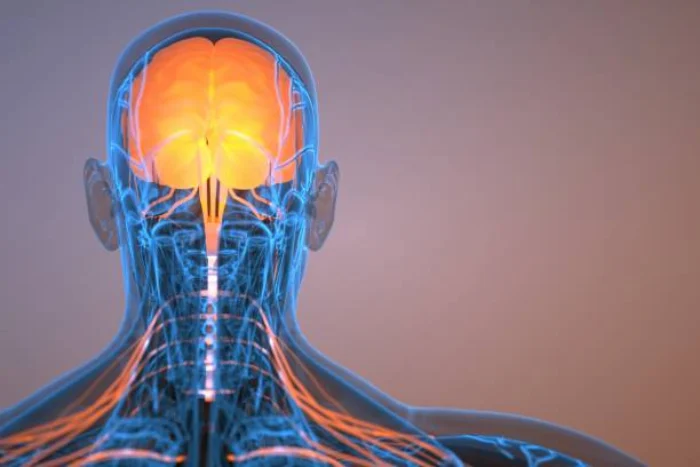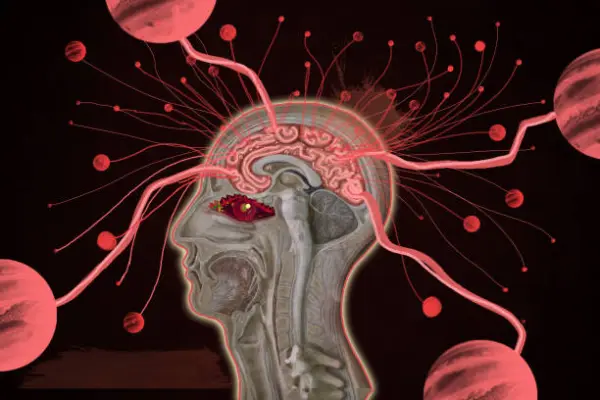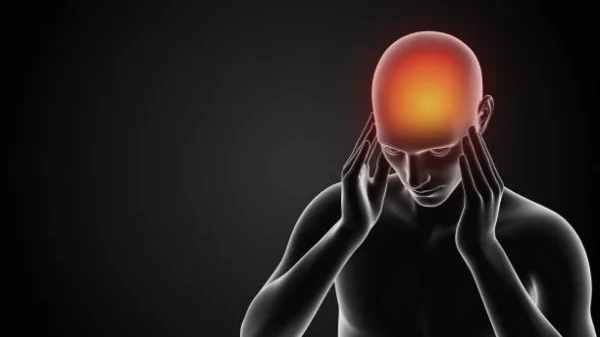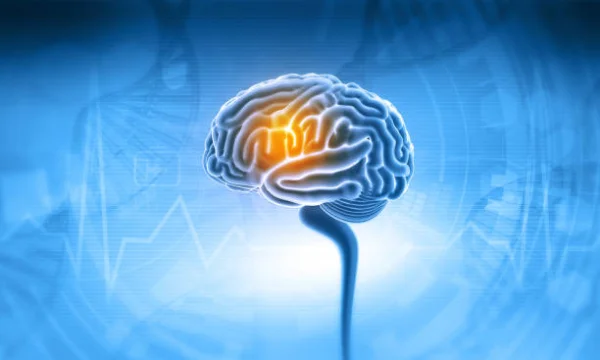Anxiety disorders are the most common mental health condition affecting millions yearly. But why do some individuals experience anxiety while others don’t? The answer lies in the brain.
It is a complex condition involving various brain regions and numerous neurotransmitters. Research suggests several factors contribute to the development of anxiety in the brain, including genetics, environmental stressors, and chemical imbalances.
Understanding these underlying causes, we can better understand how to manage and treat anxiety effectively. Today, we will discuss what causes anxiety in the brain and how it affects our mental health. So continue reading.
What Causes Anxiety in the Brain: Reasons
Anxiety is a common disorder that affects millions of people worldwide. There are various causes of anxiety, both environmental and genetic, that scientists and researchers have found. Some of the Reasons are:
- Neurotransmitter Imbalances
- Amygdala Activity
- HPA Axis Dysregulation
- Genetic Predisposition
- Structural and Functional Abnormalities
Neurotransmitter Imbalances
Your brain’s neurotransmitter imbalances might be to blame when you feel anxious for no apparent reason. When there are imbalances in serotonin, dopamine, or GABA levels, it can lead to increased anxiety.
Serotonin is involved in regulating mood and low levels of this neurotransmitter have been associated with higher anxiety levels. Similarly, dopamine and GABA also play crucial roles in anxiety regulation and their imbalances can contribute to heightened anxiety.
For more severe cases, you may want to buy Gabapentin 300 mg to help address the imbalance. It’s a synthetic drug, also known as an anticonvulsant that reduces electrical activity in the brain.
Amygdala Activity
When your amygdala’s overactive, it can lead to an exaggerated fear response, even in non-threatening situations. The amygdala plays a crucial role in the body’s ‘fight-or-flight’ response to perceived threats and processes emotions and fear responses.
People with anxiety disorders may have an overactive or sensitive amygdala, causing a stronger reaction to stressors. This heightened activity in the amygdala has been observed through neuroimaging studies. It suggests that it may be a key factor in understanding the underlying mechanisms of anxiety disorders.
HPA Axis Dysregulation
Excessive or chronic activation of the HPA axis can disrupt the body’s stress response system and contribute to developing anxiety disorders. This is evidenced through research on neuroendocrine dysregulation.
Dysregulated activity in the HPA axis can lead to increased cortisol levels. This, in turn, can negatively impact brain function and structure. For example, prolonged exposure to cortisol has been linked to decreased hippocampal volume, a region involved in memory and emotional regulation.
Also, dysregulation of the HPA axis has been observed in individuals with various anxiety disorders, including:
- Generalized anxiety disorder and
- Post-traumatic stress disorder.
Genetic Predisposition
Evidence suggests that certain genetic factors may increase vulnerability to developing anxiety disorders. Studies have shown that these disorders tend to run in families. Specific genes associated with neurotransmitter functioning, the stress response system, and brain development may play a role in this predisposition.
In particular, variations in genes related to serotonin and dopamine signaling have been linked to an increased risk of anxiety disorders. Also, alterations in the HPA axis feedback loop, which regulates the body’s response to stress, can be influenced by genetic factors and contribute to anxiety.
Structural and Functional Abnormalities:
Individuals with anxiety disorders experience differences in brain structure and function involving decision-making, emotional regulation, memory, and emotional processing. Their prefrontal cortex is responsible for regulating emotions and making decisions. Such structural abnormalities can heighten anxiety response.
Functional imaging studies have revealed altered patterns within these regions that regulate emotional responses. This indicates disrupted or imbalanced neural circuits in individuals with anxiety disorders.
Anxiety’s Effects on the Brain
Interactions among different brain regions can play a significant role in how anxiety affects your cognitive and emotional processes. Also, you may find that your emotional brain can often overpower your cognitive functions when experiencing anxiety.
The dorsal anterior cingulate cortex (DACC) also plays an important role in processing anxious thoughts and feelings. At the same time, non-anxious individuals have a reduced response in this region.
The ventromedial prefrontal cortex (vmPFC) may play a role in regulating anxiety-related emotional reactions and decisions.
Interactions Among Brain Regions
When you feel anxious, your brain regions involved in emotional and cognitive processing interact. Studies suggest the amygdala is crucial in triggering anxiety responses by sending signals to other brain regions. The prefrontal cortex regulates decisions and emotions, and the hippocampus forms and retrieves memory.
These interactions among brain regions can lead to a cascade of events resulting in anxiety symptoms such as increased heart rate, rapid breathing, and fear or panic. Understanding these complex interactions may provide valuable insights into developing targeted treatments for anxiety disorders.
Emotional Brain Overpowering the Cognitive Brain
A key player in our emotional processing, the amygdala triggers the release of stress hormones like cortisol and adrenaline in the hypothalamus. This leads to physical symptoms like increased heart rate and sweating.
Meanwhile, this flood of emotions suppresses the prefrontal cortex, which is responsible for rational thinking and decision-making. This imbalance between these two brain regions hinders our ability to assess situations and regulate our emotions logically.
Involvement of the DACC
The Dorsal Anterior Cingulate Cortex is a crucial part of the cerebral cortex that plays an essential role in processing emotions. When anxious people see threatening stimuli or pictures of frightened faces, their DACC and amygdala communicate more, causing them to feel more anxious.
This increased activity in the DACC amplifies fear signals from the amygdala. As a result, they cannot regulate their emotional responses as efficiently as others.
Reduced Response in Non-Anxious Individuals
Non-anxious individuals have minimal activation in anxiety-regulating brain regions when exposed to fear-provoking stimuli. This contrasts with individuals who suffer from anxiety disorders, which instead show hyperactivation in these areas.
The reduced response implies that non-anxious individuals have more efficient neural pathways for regulating emotional responses and inhibiting fear. Understanding individual differences in brain function is vital when studying anxiety disorders and developing treatments for them.
Role of the Ventromedial Prefrontal Cortex (vmPFC):
The vmPFC, also known as the anxiety regulator, is situated in the frontal lobe and functions by dampening anxiety signals stemming from the amygdala. Its job is to inhibit emotional responses such as fear and anxiety by reducing activity in the amygdala.
Non-anxious individuals have their anxiety levels regulated by the vmPFC through modulating amygdala activity. Conversely, individuals with damage to their vmPFC may experience increased anxiety due to the absence of this regulatory function. Hence, the vmPFC plays a crucial role in modulating anxiety levels.
How to Get Relief from Brain Anxiety?
If you’re experiencing brain anxiety, there are several ways to find relief.
Seek Professional Help:
Obtain professional help when dealing with brain anxiety. Mental health professionals can guide and recommend effective treatments tailored to your needs. Consulting a therapist or psychiatrist is an essential step toward alleviating anxiety symptoms.
They can accurately diagnose your condition and arm you with coping mechanisms to manage your symptoms. Seeking professional help is a brave move towards taking control of your mental health, not a sign of weakness.
Cognitive Behavioral Therapy (CBT):
CBT is useful for understanding your thought processes and developing positive thinking patterns to reduce anxiety symptoms. This therapy helps you identify negative beliefs and develop healthy coping mechanisms to manage anxiety.
Studies have indicated that CBT is an effective treatment for anxiety disorders, making it recommended for those seeking professional help. When you work with a therapist, you can incorporate these techniques into your daily life and start feeling better.
Medication:
You should consider medication options with a healthcare professional to manage your anxiety. You can buy Clonazepam 2mg for relief. Antidepressants, anti-anxiety medications, or beta-blockers are commonly used to reduce anxiety symptoms.
These medications work by altering the levels of certain chemicals in the brain that contribute to anxiety. But consult a healthcare professional for appropriate medication options and guidance, as medication may not suit everyone.
Mindfulness and Relaxation Techniques:
Mindfulness, deep breathing, and relaxation exercises can help calm your mind and alleviate anxious feelings. These techniques promote a sense of present-moment awareness and relaxation, reducing the intensity of anxious thoughts and physical symptoms.
It involves being fully present in the moment and observing your thoughts without judgment or attachment. Deep breathing exercises focus on slowing breathing to promote relaxation and reduce physical tension.
Relaxation exercises such as progressive muscle relaxation or guided imagery can also effectively reduce anxiety symptoms. Research has shown that regular practice of these techniques can improve emotional regulation and decrease anxiety levels.
Fight Anxiety and Boost Your Mental Health with Daily Relaxation Techniques
Anxiety stems from an overactive amygdala that triggers stress hormones and neurotransmitters, resulting in the ‘fight or flight’ response. This response leads to cognitive difficulties such as negative thoughts, difficulty concentrating, and memory impairment.
But several evidence-based techniques exist to ease these symptoms, such as mindfulness meditation, CBT, medication, and exercise. Incorporating these into your daily routine can reduce anxiety’s impact on brain function and overall mental health.





